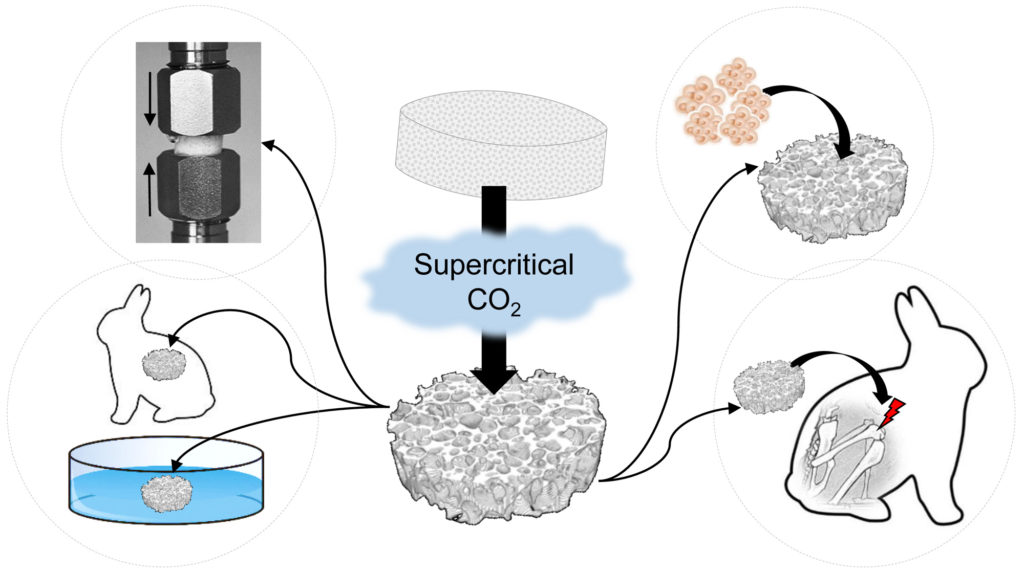High porosity and bone attachment are crucial elements for a synthetic bone graft – study demostrates the excellent properties of a novel composite material
Posted on 30.09.2019 by Biomendex
Adaptos™ is a highly porous composite material combining the bioactivity of ceramic granules and the excellent mechanical properties of a polymer phase. The development of AdaptosTM is based on high-quality research. A study describing the technology behind AdaptosTM was published last summer in European Cells and Materials, which is listed in InCites Journal Citation Reports with Orthopedics in Quartile 1.
Synthetic bone grafts are still less used while autologous bone remains the benchmark among bone grafts. Commonly used ceramics are hard and brittle making them challenging to implant and poor candidates to load-bearing sites. To address these problems, supercritical CO2 (scCO2) foaming was used to create a β-tricalciumphosphate/poly(L-lactide-co-ε-caprolactone) (β-TCP/PLCL) composite. Firstly, this study demonstrates the high porosity, elasticity and display of the bioactive ceramic phase on the surface of the created composite. High porosity is crucial for cell- and tissue ingrowth as well as for the formation of vascular network inside the implanted scaffold. Moreover, the elasticity makes the composite moldable and easy to implant whereas the display of the ceramic phase ensures bioactivity of the composite material. In the second phase on the study, the composites safety and ability to support bone formation was shown on cell-level in human adipose stem cell (hASC) culture. Importantly, hASCs were shown to secrete a notable mineralized collagen matrix typical to bone tissue during the 3-week culture. Finally, the study shows the biocompatibility and the osteoconductivity of the developed composite in a rabbit femur defect as bone was able to grow on the surface and inside the composite already at 4 weeks. This study demonstrates in vitro and in vivo the potential of the foamed β-TCP/PLCL composite as a synthetic bone graft.
You can download the full study in PDF-format here.
